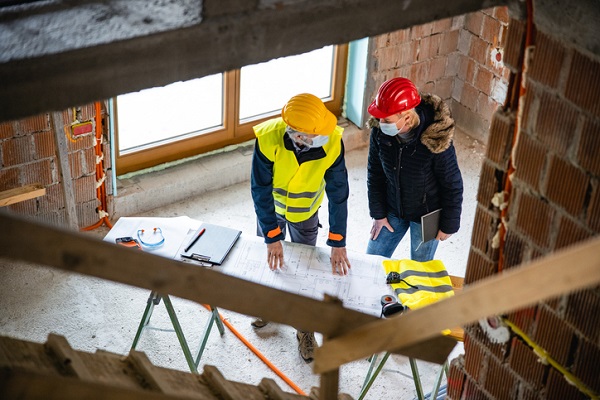The four Cs of post-pandemic construction: complex challenges, culture and climate

As somewhat of a double-edged sword, the construction industry’s ability to operate throughout Australia’s COVID-19 restrictions has presented its own unique challenges.
In 2022, the sector must continue to adapt to address fresh, emerging priorities: delivering increasingly complex builds, maintaining a safe and positive workplace culture and climate action.
Like many industries, the pandemic pressed ‘fast forward’ on the adoption of several innovations and opportunities across the construction sector. The ability to work remotely was suddenly essential to many projects, calling for digital innovation and lateral solutions.
Some might say the better part of the past two years has seen the industry perfect remote working, with newfound technology undeniably here to stay – even reshaping the way we build.
With this, comes the construction industry’s broadened ability to deliver more complex challenges and refine more efficient and precise processes.
One example of this emerging technology is Building Information Modelling (BIM). The innovation enables teams to not only create projects in a digital environment but to meticulously plan each step of the process, enabling them to foresee where clashes between trades may occur and to rectify this through careful coordination of services.
Combined with 360° videography and drone deployment, this technology allows an entire build to be monitored remotely in real-time. The benefits of this are multifaceted, and not only improve productivity and quality of the build itself but allows any safety hazards to be identified early. These can be duly corrected without impacting timings, delaying the projects or increasing usage of materials.
Looking ahead: how will digital innovation rebuild Australia’s construction industry?
Digital innovation in construction supports creativity and explorative design without concerns, or impact, on the ‘real world’ environment. When you consider the rapidly evolving landscape humans face, this in itself is a game-changer.
There is tremendous power in this ability, particularly when combined with a ‘big data’ approach, to collect and collate information to inform project planning. Doing so will help create better, more significant learning outcomes which in turn lead to greater efficiencies, outputs and ultimately client satisfaction.
Currently, Hansen Yuncken is implementing a centralised platform that allows us to collect data from across multiple projects to innovate worksite safety, real-time reporting and quality control.
Unsustainable practice is… clearly, unsustainable
With the Australian government’s 2050 Net Zero commitment, all industries must adopt a progressive approach to sustainability as standard practice, rather than an ‘add on’. Construction is no exception.
With the construction sector contributing over 18% of Australia’s carbon footprint, there is serious work to be done. Organisations should look to greener materials, digital innovations to reduce wastage and work with their clients and stakeholders to reduce climate impact.
Becoming greener requires an end-to-end view of the construction process. After all, can a building be truly sustainable if it was carbon-intensive to build? Addressing the complete supply chain is essential, which requires collaboration with suppliers and partners.
At Hansen Yuncken, this work has already started with the adoption of materials such as green concrete. Continuing innovation of business practices is also maximising the use of renewable energy and use of recycled water where possible.
At a community level, Hansen Yuncken works with local subcontractors to ensure clients’ investments support local economies. Onsite education, and building knowledge in these areas, also adds to workforce capabilities to deliver future, sustainable projects.
Environmentally speaking, relocating wildlife is highly important to ensure Australia’s unique biological diversity, as is creating new, green spaces.
The post-COVID construction industry is one that has not so much changed as rapidly grown. Sustainability, digital innovation and equality have always been a priority and, as lockdowns end, we will continue to build a better, shared future for generations to come.
